The following is a study of the advent of coffee to Cundinamarca, Colombia, specifically as it relates to the farm from which we source our new El Porvenir — Organic, a limited edition coffee now available at our online shop. The study is written by Alejandra Fierro Castro, a descendant of one of the two families that have presided over the farm since its inception late in the 19th century.
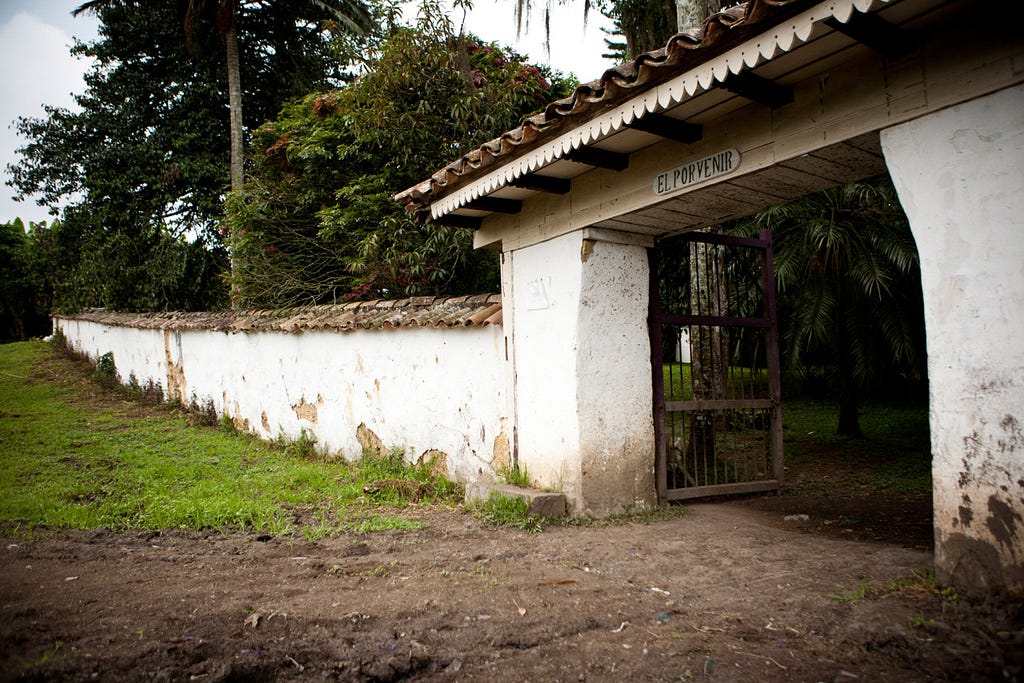
Alejandra Fierro Castro
The Arrival of Coffee to Cundinamarca: The Case of El Porvenir
Introduction
Coffee isn’t just a product, it also tells stories, experiences, changes, generates great expectations and hopes, and even creates cultures. From its origins in Ethiopia and Yemen it has expanded across the globe, and its history in Colombia has been only a small part of its worldwide legacy. Coffee was brought to the country for the first time around 1720, when Jesuit missionaries commercialized it via their route along the Orinoco River, planted it in the Eastern plains, eventually spreading it to Popayán, Cúcuta, Norte de Santander, Bucaramanga, Antioquia and in 1820 finally to Boyacá and Cundinamarca. From that point forward, coffee cultivation has been considered one of the main axes of connection to the international system, allowing the commercial, economic and industrial development of Colombia (Palacios, 2009, p. 31). Within this context, different parts of the country have been characterized by the inception of different strongholds in the production and commercialization of coffee, those being Cundinamarca, Antioquia and Santander, who through the implementation of large plantations and foreign investment between 1850 and 1870 have consolidated and developed their production outputs even into the present. In this way, they are zones that, thanks to the ample experience of its cultivators, bring up questions about the history, importance, development and change of the crop and the plantations that grew it.
In light of this, it’s relevant to ask oneself how and why coffee reached these specific areas within a designated range of time to know the historical context, the people and influences that comprise the story. My work will center on the state of Cundinamarca, specifically the province of Facatativá, and in the municipalities of Sasaima and Albán. My investigation will focus on the coffee production of Facatativá between 1880 and 1970, specifically intending to respond to the following question: In what moment and under which circumstances did the cultivation and production of coffee begin in the province of Facatativá, Cundinamarca?
The text discusses the arrival of coffee cultivation in Cundinamarca, most of all in the province of Sasaima, and will try to shed light on the formation of the coffee plantation system, its different organizational and administrative structures as well as the differing labor systems. For that, emphasis will be placed on the hacienda El Porvenir and its relation to the texts of various authors such as Marco Palacios, Malcolm Deas and Mariano Arango.
There are two specific reasons why I have chosen to carry out this work: on the one hand, I undertook this because coffee is considered the meeting point between various economic, political and social processes within Colombia in which many distinct socioeconomic groups took part. Authors like Jesús Bejarano (1987) and Marco Palacios (2009) consider coffee to be the key favor that allowed Colombia to enter the international market, giving rise to various forms of development and modernization. “The period between 1870 until the global financial crisis of 1930 is known as the period of ‘development toward the outside world’ and asserts that agricultural exports were the engine of the economy,” (Bejarano, 1987, p. 91). Thus, I believe it is important to investigate the circumstances under which coffee played a role in the life of Colombian citizens and how they were influenced by it in order to understand its ramifications on Colombian society.
On the other hand, I want to carry out this work because I have a family history that is deeply intertwined with the production of coffee in Sasaima and Albán. My family owns a coffee farm called El Porvenir, which was purchased by my grandfather Reinaldo Fierro and inherited by my father, Orlando Fierro. The farm itself has a deep history, much of which is still unknown, which is the reason why I undertake this investigation of the farm whose inception dates back to 1870.
After a dialog with my father, Orlando Fierro, who is the farm’s current owner, I found that the Englishman James Tyrell Moore was the man who brought coffee to these lands. I will therefore begin with a brief biography of Moore’s life to introduce how specifically the first plantations were established in Cundinamarca. I will then describe how the coffee plantation system grew after Moore established the first farm, ending with the history of El Porvenir.
James Tyrell Moore
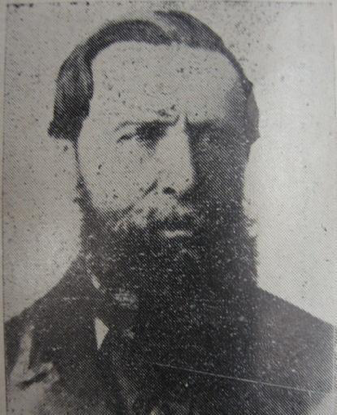
James Tyrell Moore (London 1803 — Bogotá 1881). A mining entrepreneur in Antioquia who eventually became the first to cultivate coffee in Cundinamarca.
Moore, who was the first to establish a coffee plantation in Cundinamarca, did so in Chimbe, minutes from Sasaima. After founding the first several plantations, many businessmen from Antioquia and Bogotá were influenced by the idea and saw coffee cultivation as a pathway to modernization. It was in this way that, following the success of Moore’s plantation in Chimbe, many more plantations began sprouting up across the state, especially in Sasaima where El Porvenir sits.
Toward the beginning of the 20th century, Colombia was characterized as a territory full of opportunities: rich mines, fertile and uncultivated lands, railways and highways to be built and plenty of demand for manual labor. In other words, there were many aspects of the country that would attract foreign investment and projects, which brought a large wave of immigrants at the turn of the century. Through figures such as Moore, we can see the overwhelming desire to implement foreign knowledge and techniques to Colombian business practices through his work in maximizing efficiency and applying modern mechanical, agricultural and mining engineering technology to coffee cultivation.
Moore was born in 1803 in London, studying mining engineering in Freiberg, Germany. He arrived in Colombia in 1829 as part of a colony of 100 Brits who worked for the British Colombian Mining Association based in Marmato, Caldas. A year later, however, he was invited by a group of miners to begin work in Medellín, where he invented the Cornish mill — a machine that used iron pistons that broke apart rocks to extract gold in a much faster and more efficient way than previously available. With this new mill, Moore’s fortune grew immensely and he began starting his own businesses. In 1844 he built the then-largest metallurgy facility in Colombia, subsequently founding the Hacienda Foundation of Titiribí.
After many years in Colombia, Moore married Nepomucena Mejía, an event that held great importance for the history of El Porvenir as it was Mejía’s brother-in-law Jose Antonio Mejía that founded the farm under the guidance of Moore. After living a life of relative calm in Medellín, Moore left to Bogotá in 1863 with his wife due to rising instability in Antioquia. The Mejías were a powerful liberal family with great political influence, but when the conservatives defeated the liberals, many family members were forced to flee in order to escape persecution. Upon his arrival in the capital, Moore was unable to continue his mining work and began pursuing coffee cultivation due to the favorable prices and local growing conditions. In 1865, he bought land in Chimbe, and in 1867 his plantation began to yield coffee.
His work in introducing the plantation system to Cundinamarca attracted the interest of several Antioquian businessmen, including Jose Antonio Mejía (Arango, 1977. P. 66), who together formed an important network of plantations that controlled coffee cultivation in the region and increased exports significantly.
The growth of the coffee plantation system in Cundinamarca
The cultivation of coffee in Sasaima grew at the beginning of the 20th century due to the increase in coffee consumption among the Bogotá elite as well as the decline of tobacco cultivation in Cundinamarca. Coffee became a preferable alternative to tobacco once plantation owners realized the resistance of the crop to plagues and droughts, its easy commercialization and ease of preservation (Arango, 1977, p. 64). By 1864 over a million coffee trees had been planted along the road between Honda and Bogotá, lead by the efforts in Sasaima. Medardo Rivas in “The Workers of Tierra Calienta”, in reference to Sasaima and Albán, writes:
Deviating from the well-treaded path that from the capital leads to Honda, and taking a right turn at a place called Agualarga, the traveler finds himself in a sumptuous valley cultivated with care, the beans being of such quality that it can compete with the coffee produced in any of the areas surrounding the Magdalena and whose export is even cheaper (Rivas, 1972, p. 336).
One factor that determined the expansive growth was the business strategies and experience Moore brought with him, which even facilitated the expansion of coffee to Facatativá in the 20th century. Moore developed a cultivation system characterized by vertical integration, controlling the entire planting, harvesting, packaging and shipping processes. This model evolved into the one used by other plantation owners, including Jose Antonio Mejía in El Porvenir. According to Arango (1977) coffee cultivation in Cundinamarca was “in large part initiated by Mr. Tyrell Moore, a man of science that founded a model establishment for coffee cultivation from seed to packaging,” (Arango, 1977. p. 66).
These cultivation processes made it so that Cundinamarca became one of the leading coffee-exporting regions in Colombia, behind only Cúcuta and certain regions of Santander (Deas, p. 78). By 1870, Cundinamarca had become known for its superior coffee quality, thereby facilitating the region’s entrance into the international coffee trade, most importantly into the London coffee market. Malcolm Deas affirms that Sasaima accounted for about 10% of Colombia’s total exports, with a product of excellent quality that was successful as both a domestic and international commodity. Additionally, the growth of the plantation system in Cundinamarca not only influenced coffee’s expansion, but also contributed to the urbanization of the region (Deas, p. 79). Authors like Mariano Arango (1977) and Marco Palacios (2009) also confirm the explosive growth of the coffee industry in Cundinamarca from 1875 to 1880. Arango states that in this era “numerous Bogotá businesspeople bought lands suitable for coffee and established plantations (Arango, 1977, p. 65),” leading to the production of over 6,000 sacks of coffee per year, quadrupling coffee production in the zones around the Magdalena River.
Hacienda El Porvenir
It is within this context that José Antonio Mejía founded El Porvenir in 1867, under the tutelage of James Tyrell Moore. Medardo Rivas relates the story as follows:
Following [Moore] closely, José Antonio Mejía, our cousin, son of the great businessman and skilled calculator Braulio Mejía, and nephew of the immortal Liborio Mejía, the hero of La Cuchilla del Tambo and last president of the Homeland of the immortals founded what is now enjoyed by don Luis Mejía Montoya, his son, who has since expanded the business (Bejarano, 1972, p. 298).
Thus, El Porvenir follows the same productive and administrative lines of Moore’s original plantation in Chimbe in that it applies vertical integration and what authors such as Mariano Arango (1977), Jesús Bejarano (1987) and Marco Palacios (2009) refer to as “plantations of renter-laborers.”
El Porvenir utilized a form of production that was common among the other plantations in Cundinamarca and some in Tolima, which functioned until the 1930’s (Bejarano, 1987, p. 99) in which some renters doubled as permanent laborers in production, that is to say, they were permanently responsible for the harvest and general cultivation, along with some contract laborers that were hired seasonally and during period of high demand. In this production model, even though the farm’s owner did not live on the estate, he visited constantly and was typically an urban businessman, almost always from Bogotá, that was unable to establish his base outside of the city for fear of being unable to tend to his other business ventures. Consequently, it was necessary for an administrator to control production on a daily basis, and with this came the renter-laborers. Malcolm Deas, in his article about the Hacienda Santa Barbara speaks of the relation between the administrator and the owner, Roberto Herrera. Deas speaks of a very close relationship involving a great deal of trust and appreciation. In El Porvenir, there is also evidence of the same relationship that continues to this day.
Coffee production in El Porvenir and other plantations in Sasaima, such as Hacienda Santa Barbara, is characterized by small yields from lots that were property of the farmer and were used to farm subsistence crops that provided food for the laborers and their families.
The cultivation of these parcels of lands was not conducted at the liberty of the renter, but was instead practiced as a condition of the renter’s agreement with the plantation. The renter-laborer’s work was unpaid some days of the week, and did not only involve coffee production but also the sale of food to the plantation for livelihood of the administrator and his family as well as to local law enforcement without remuneration.
Arango states that “the laborers were completely at the mercy of the property owners until the initiation of the public works campaign in 1924 (Arango, 1977, p. 135).” In this way, the plantation counted on vertical production, that is to say labor from cultivation to harvesting to processing, logistics and export. This same system exists on the farm to this day.
Luis Mejía, son of Jose Antonio, inherited from Jorge Mejía a 72-hectare farm that, after many years and with no inheritants, sold the farm in 1960 to the descendants of Pedro Fierro, former carpenter and laborer on the farm.
Currently El Porvenir has 35 hectares which are used for certified organic coffee cultivation following traditional practices. In the next two images we can see photographs taken during period in which Luis Mejíia presided over the farm, and a third taken only a few years ago in which the same shade-grown coffee system is implemented and very little change can be observed in the landscape.
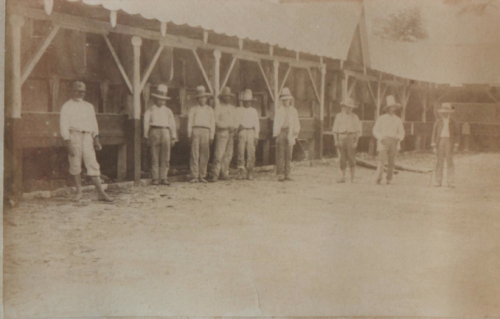
Renter-laborers in El Porvenir circa 1890
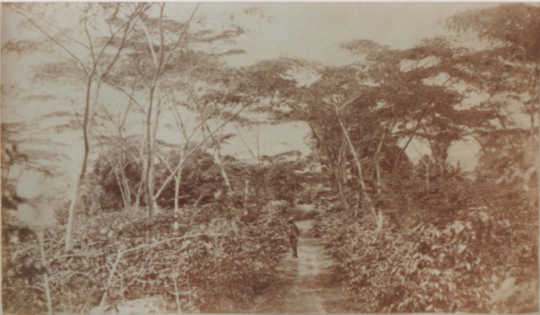
Photograph from the 1890s
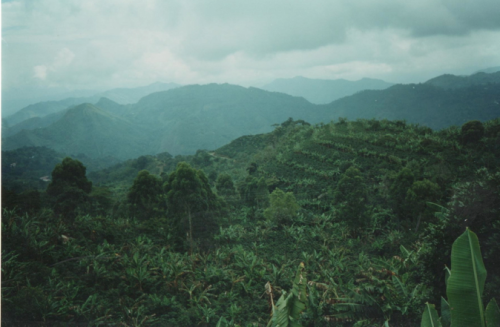
Photograph from the present day
In conclusion, it’s important to mention that the rest of the hectares were divided among his descendants. Many of the plots close to the farm are the property of extended family all the with the last name Fierro.
It was in this way that coffee arrived in Cundinamarca, primarily in Sasaima, Albán and Chimbe, by way of the Englishman James Tyrell Moore, who taught and inspired many other residents of Bogotá and Antioquia to pursue a life of coffee cultivation, a deed whose effects continue to the present day in farms like El Porvenir.
Bibliography
- Arango, M. (1977). Café e industria, 1850–1930. Bogotá: Carlos Valencia Editores
- Bejarano, J. (1987). Ensayos de historia agraria colombiana. Bogotá: Fondo Editorial, CEREC
- Malcolm Deas (s.f). Una Hacienda Cafetera de Cundinamarca: Santa Barbará (1870–1912). Biblioteca Luis Ángel Arango, Banco de la República.
- Palacios, M. (2009). El café en Colombia 1850–1970, Una historia económica, social y política. (4ta Ed.). México: El Colegio de México
- Rivas, M. (1972). Los trabajadores de tierra caliente. Colombia: Biblioteca Banco Popular
- See more at: http://devocioncoffee.tumblr.com/post/139132876931/the-arrival-of-coffee-to-cundinamarca-the-case-of#sthash.gOYSkN4J.dpuf
